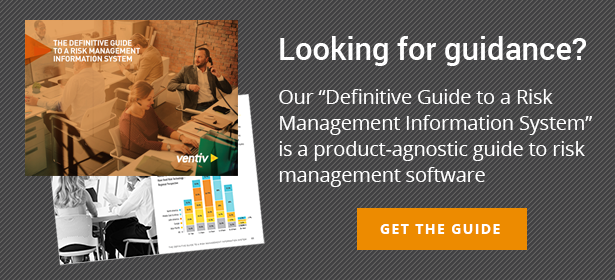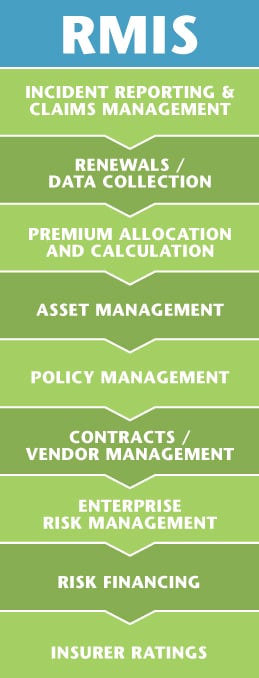As well as the functionality you'd expect, such as claims management, today a risk management information system provides a wide range of functionality as standard. What is most important, however, is that your RMIS provider can build the system to match your processes, vocabulary, people and evolving business needs, while also improving efficiencies and delivering best practices.
Download our "Definitive guide to Risk Management Information System" here!
The list below provides an indication of the most popular features, or modules, you should expect from your preferred RMIS provider:
INCIDENT REPORTING & CLAIMS MANAGEMENT: Provides a complete picture of all your incidents and types of claims activity. This enables root cause analysis, control of third-party claims administrators and reduced claims leakage.
RENEWALS/DATA COLLECTION: A central repository for collecting, validating and cross-examining all your organization's value collections, ready for your annual renewal process and market submission.
PREMIUM ALLOCATION & CALCULATION: Provides a consistent, automated methodology to calculate, allocate and monitor premiums across business units based on claims severity, likelihood, impact, and risk mitigation measures.
ASSET MANAGEMENT: Provides you with consistent and updatable information on all your physical assets and, overlays your assets and exposures with insurance data, natural catastrophe and political information.
POLICY MANAGEMENT: Insurance policy management software that allows you to get to grips with all your insurance policies, including local, fronting and global, to provide full transparency, helping you to avoid duplication or gaps.
CONTRACTS/VENDOR MANAGEMENT: Collate and manage legal and risk related contracts from draft through to renewals. These may range from contracts with principals, agents, vendors, service providers to subcontractor contracts.
ENTERPRISE RISK MANAGEMENT: Enables you to log, map and manage your risks and share information with your organization's auditors, health and safety and other departments in order to assess your appetite for, and response to risks.
RISK FINANCING: Allows the policy record to show the claims costs split by participating insurers and reinsurers, and layers and, shows the relevant loss ratios, including real time erosion of policy limits and aggregate.
INSURER RATINGS: Rates the financial strength of your risk carriers using leading credit rating agencies, Standard & Poor's and AM Best.
What's in it for you?
To dig deeper into the benefits of each functional module described above, be sure to download the free Definitive Guide to a Risk Management System. The guide will help you set expectations for how a RMIS can help your organization. In addition, several other functionality options are presented for your consideration.













